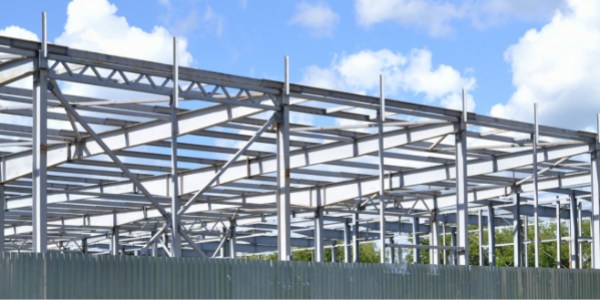NEC 70, Article 250, Section 250.121(B), Metal Frame of Building or Structure

By: Robert Key | Jun 02, 2021
Restricted use of Metal Frames as an Equipment Grounding Conductor
Article 250 is arguably the most important article in NEC 70, and much of its content is devoted to the proper sizing and installation of equipment grounding conductors. First, let us consider the purpose of an equipment grounding conductor (EGC). We know that EGC’s provide a low impedance path from the equipment to the overcurrent protective device (or ground detector for high-impedance grounded systems) so that a fault condition can be quickly cleared. Hence, EGC’s are a critically important safeguard to persons and equipment.
Why not use the building steel as an EGC? Although this looks on the surface like a convenient way to save time as well as money, there are multiple reasons why using the building steel for this purpose is not a good idea. First and foremost, the low impedance path that the Code requires can be interrupted by paint, rust, or structural changes. NEC 70 states in Section 250.4(A)(5), “Electrical equipment… Shall be installed in a manner that creates a low-impedance circuit facilitating the operation of the overcurrent device…” Using the building or structural steel as the EGC could leave us without a low impedance ground pathway or, perhaps with no pathway at all. Also, consider the possible consequences of incidental contact with a metal frame of a building during a fault condition. This could cause injury or even death to an innocent passerby who makes contact with the frame of the building or structure. Additionally, using the building steel as an EGC conflicts with other sections of the Code, such as with Sections 250.134(B) and 300.3(B), which tell us that EGC’s must be run with the circuit conductors.
Why the change in the Code? Has this practice not been prohibited in the past? The 1975 NEC permitted the frame of a building to serve as an EGC. 1978 edition prohibited this use, but that prohibition was moved to Section 250.136(A), where it remained through to the 2017 edition. Having the prohibition in that location restricted the application of this rule solely to electrical equipment secured to, and electrically connected to, a metal rack or structure provided for support of said electrical equipment. In the 2020 NEC, this prohibition has been relocated to Section 250.121(B), where it can be applied more broadly. It states: “The structural metal frame of a building or structure shall not be used as an equipment grounding conductor.”
This change, specifically prohibiting the use of building steel as an EGC, clarifies the intent of the Code and is also in harmony with the purpose of the NEC as stated at Section 90.1: “The purpose of this Code is the practical safeguarding of persons and property from hazards arising from the use of electricity.” The purpose of an EGC is to provide a low impedance path from the equipment to the overcurrent protective device, so that a fault condition can be quickly cleared. There are several different options available for providing this path, but the use of the building steel is now specifically prohibited.


I am trying to find the applicable codes and regulations either in the NEC, OSHA, NFPA, or other similar regulating bodies that apply to a galvanized observation platform tower that is approximately 10‘ x 10‘ with stairs going up it. Recently installed at one of my public schools local facilities. That has absolutely no Earth grounding on it of any kind. Location is in the state of Arkansas. The company that built and installed it says they do not do lightning grounding of any kind on there part some over 100 feet tall solid metal structures. I know that per NEC ALL radio towers of ANY height must have multiple Bonded Earth grounds and that they must be both need to any main electrical service Ground.